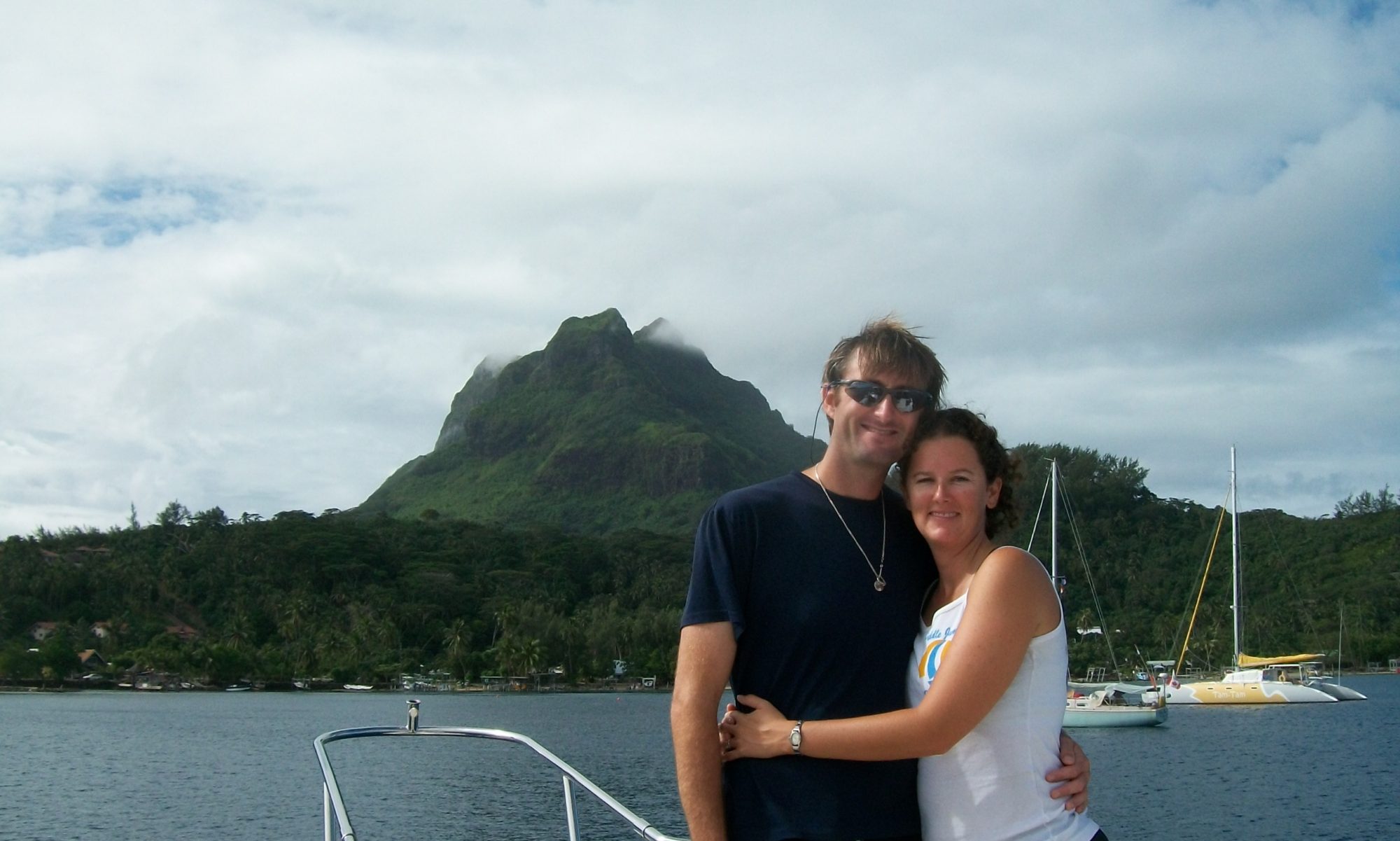Random uninhabited beach, central Fakarava, Tuamotu, French Polynesia
Figuring out that US $67.25 doesn’t even buy a single dinner out for Tiffany and myself at any restaurant on the island (seriously, crazy expensive here), my career as a professional dare taker comes to sudden, if not awesome, end.
Not that I won’t take dares. Please, by all means.
We hauled anchor and headed up the Coast, well, the coast on the inside of the island, which isn’t very far from the other coast on the outside of the island. Here let me show you what I mean:
Yeah, that’s really it. Think about that for a second, they live on an island no wider than a few football fields in the middle of the Pacific. There is a certain reassurance that large land mass provides, a reassurance that until now I had not ever noticed before. It is something very disconcerting about being able to see both coasts at the same time of the only land for about 100 + miles. Something in the back of your mind that says: hey, if there’s a tidal wave buddy, or maybe a hurricane, this island ain’t gonna do much more than trip it up a bit. You’re basically screwed…
…it gives one pause.
Dropping anchor for the night, we went ashore and decided to have a “genuine natural Polynesian island beach experience.” What does this mean? More coconuts!
Few points here:
1) What did Tiffany and Greg learn from their last coconut experience? Not a DARN thing, thank-you very much!
2) Actual Polynesians are not in any way interested in “genuine natural Polynesian experiences.” I met this dude a few days later:
Huh, a fire axe. Don’t see that in too many beach movies eh? Just in case you are wondering, they cut open the coconuts and let them dry because the milk is worthless. It’s the coconut oil that is the cash crop.
The evening culminated with a perfect sunset barbecue, though more ended up being on the menu than was originally scheduled:
I swear dude, it was suicide. I have witnesses.























